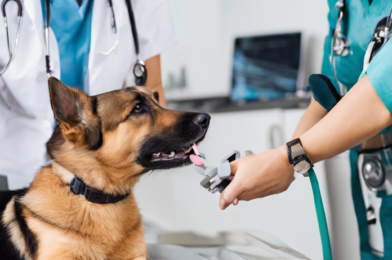As a devoted pet parent, you want to give your furry friend the best. Store-bought treats may be convenient, but they often contain additives and preservatives that aren’t exactly nutritious for your four-legged family members. So why not whip up some healthy and delicious treats in your own kitchen? It’s easier than you think!
First, let’s talk about some healthy base ingredients. Oats are a great starting point; they’re packed with fiber and B vitamins, which are essential for a healthy digestive system and energy metabolism. Another staple is peanut butter, which provides protein and healthy fats, but be sure to opt for natural varieties without added sugar or salt. You can also use nut butter alternatives, like sunflower seed butter, which is a great option for pets with peanut allergies. Pureéd sweet potatoes are another fantastic base; they’re rich in vitamins A, C, and B6, as well as fiber and antioxidants.
For added flavor and nutritional boosts, you can include ingredients like cinnamon, which helps regulate blood sugar and supports joint health, or turmeric, known for its powerful anti-inflammatory properties. Just remember to use these spices sparingly, as a little goes a long way. Fresh or dried herbs like parsley, basil, or mint can also be added for extra flavor without the need for excessive salt or unhealthy additives.
Now, let’s whip up a simple recipe: Peanut Butter and Banana Bites. Mash one ripe banana in a bowl and add two tablespoons of natural peanut butter. Mix in a teaspoon of cinnamon and a cup of rolled oats. You can add a little water if the mixture is too dry. Form the mixture into small bite-sized treats and place them on a lined baking sheet. Bake at 350°F for 15 minutes, or until golden. These treats will be a hit with your pup, and you can store any leftovers in an airtight container in the fridge for up to a week.
If you’re more of a cat person, try making some Tuna Crisps. Mix a can of drained tuna with a beaten egg and a tablespoon of olive oil. Add a teaspoon of catnip, and if your cat isn’t a fan, you can substitute it with some finely chopped fresh parsley. Mix in enough oat flour to form a soft dough, and then roll it out thinly. Cut the dough into small treats and place them on a lined baking sheet. Bake at 350°F for about 10 minutes, or until golden and crisp. Let them cool before serving them to your feline friend.
Making your own pet treats is not only fun, but it also ensures that you know exactly what your furry companions are eating. With just a few simple, healthy ingredients, you can create delicious treats that they’ll love, and you’ll love giving to them. It’s a win-win!
So, get creative in the kitchen and experiment with different flavors and ingredients to find your pet’s favorites. Your furry friends will thank you for it with lots of purrs and tail wags! Remember, always consult with your veterinarian if your pet has specific dietary requirements or allergies, and be sure to introduce new treats gradually to avoid any tummy upsets.
Happy baking, and I’m sure your pets will happily oblige as official taste testers!





